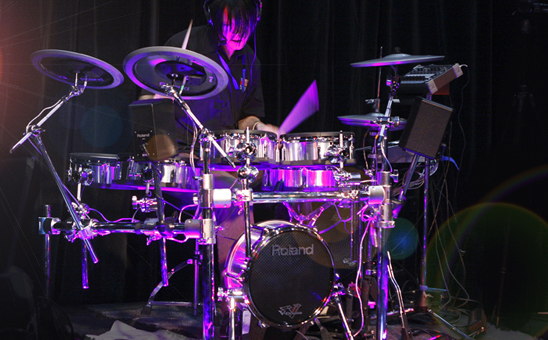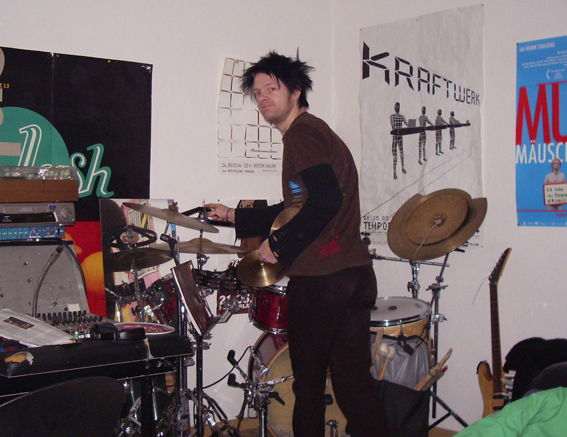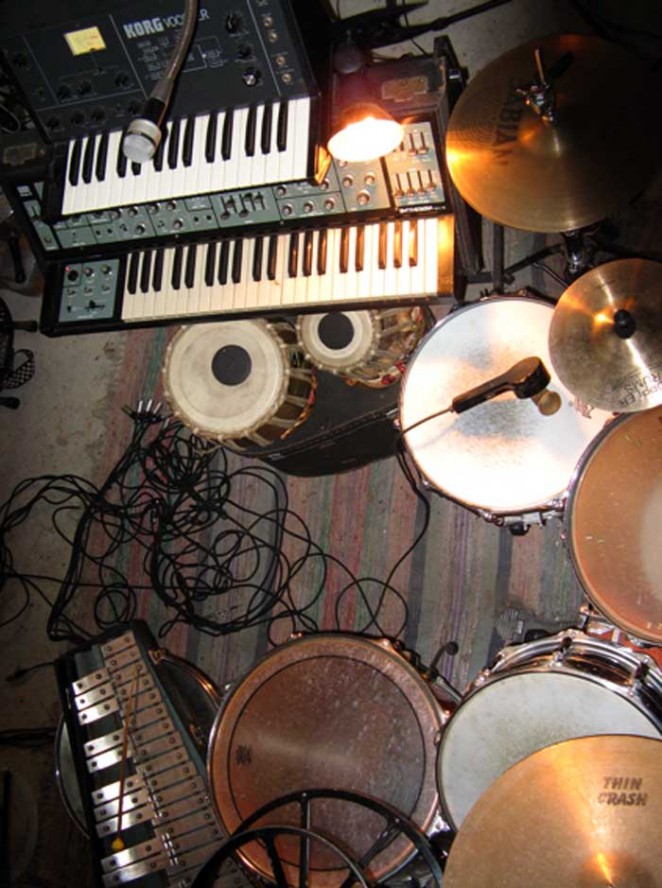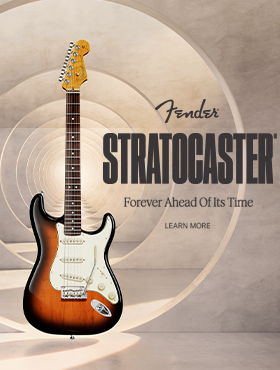 You think you know someone … you dig a little deeper and sometimes you discover that there’s a whole other world to them. Take Simon Ayton for example. For me and probably many others in the music products industry, he’s Roland Corporation’s Australian V-Drum guy, a talented drummer who presents clinics and is the resident expert on that product line. However, Simon also has an extensive history of recording and producing internationally in the worlds of film, advertising and of course, music. Along with his radio journalist partner at the time, Simon had visited around 35 countries working for UK’s BBC world service producing recordings. He also worked in Berlin for a number of years on soundtracks for short films and features. One film, which translates in English to Quiet As A Mouse became a cult classic in Europe. The film soundtrack work also took him to American arts hubs such as New York and Chicago, where he was involved in the music for a dozen or so feature films. Over the last seven years, Simon has not only been honing his production skills and working for Roland, but also writing music of his own. Earlier this year, under the moniker of TRAP SET, Simon released his second solo album Thingamejig. It’s a multi-layered, textural exploration of modern day rock and pop with elements of punk, industrial, avant gard, kraut rock and electronica. Simon plays all of the instruments including drums, guitars, keyboards, theremin, trumpet, and violins. The only other person who appears on the album is his sister doing a some backing vocals. He even creates his own recording software. As a bonus to fans of the album, Simon has also developed interactive versions of some of the songs whereby you can shape your own mix of his music. Those versions are accessible on his website. Apart from all of the mind boggling technology and thought which has gone into the album … importantly … it’s a damn fine record, featuring some great songs and is a pleasure to listen to. Australian Musician couldn’t let this project go by without bringing it to your attention. Greg Phillips spoke to Simon about his TRAP SET project and the creation of the album.
You think you know someone … you dig a little deeper and sometimes you discover that there’s a whole other world to them. Take Simon Ayton for example. For me and probably many others in the music products industry, he’s Roland Corporation’s Australian V-Drum guy, a talented drummer who presents clinics and is the resident expert on that product line. However, Simon also has an extensive history of recording and producing internationally in the worlds of film, advertising and of course, music. Along with his radio journalist partner at the time, Simon had visited around 35 countries working for UK’s BBC world service producing recordings. He also worked in Berlin for a number of years on soundtracks for short films and features. One film, which translates in English to Quiet As A Mouse became a cult classic in Europe. The film soundtrack work also took him to American arts hubs such as New York and Chicago, where he was involved in the music for a dozen or so feature films. Over the last seven years, Simon has not only been honing his production skills and working for Roland, but also writing music of his own. Earlier this year, under the moniker of TRAP SET, Simon released his second solo album Thingamejig. It’s a multi-layered, textural exploration of modern day rock and pop with elements of punk, industrial, avant gard, kraut rock and electronica. Simon plays all of the instruments including drums, guitars, keyboards, theremin, trumpet, and violins. The only other person who appears on the album is his sister doing a some backing vocals. He even creates his own recording software. As a bonus to fans of the album, Simon has also developed interactive versions of some of the songs whereby you can shape your own mix of his music. Those versions are accessible on his website. Apart from all of the mind boggling technology and thought which has gone into the album … importantly … it’s a damn fine record, featuring some great songs and is a pleasure to listen to. Australian Musician couldn’t let this project go by without bringing it to your attention. Greg Phillips spoke to Simon about his TRAP SET project and the creation of the album.
 GP: What were your influences growing up?
GP: What were your influences growing up?
SA: My dad is actually a chemist but he was teaching electronics, tinkering, building mixing desks and microphones, so I actually grew up with him recording bands. We’d go to the Victorian Arts Centre and he’d record big bands and orchestras and jazz bands. I basically got in the way and helped him with the microphone stands and stuff like that. I watched and became obsessed with the drummer with this band he was recording, so that’s where my obsession with drums started but also it was all intertwined with recording. I was obsessed with not only learning an instrument but learning how it was recorded and I tried to master that. So getting back to my influences, I’d say my mother and father, Klaus Schulze, The Beatles, Stewart Copeland & The Police (also my first big concert in 1984, synchronicity tour), Robert Smith & The Cure (for creating a real atmosphere and being so distinctive and free to do whatever he wants), Kraftwerk, Split Enz, John Bonham & Led Zeppelin, Skinny Puppy all make or have made a lasting impact.
You have just released your debut solo album Thingamejig, were the songs written specifically for this album or over a longer period of time?
They were written over a period of seven years and a couple of tracks just before I recorded. The very first ones go right back seven years when I was in Berlin looking for a place to record and I found an old building next to where I was living, an old car garage which was empty but still had power running to it so I used to sneak in and record some percussion. It was the first time that I recorded songs with me singing that were more conventionally structured. choruses verses and traditional instruments.
There are a lot of different layers in your music. I am interested in how you constructed the songs and what was the starting point?
I actually make my own software for recording, so even though I occasionally use Logic and Ableton, most of the music that I create come from the plug-ins that I develop. I have been building them since about 1998 which is for a system called Scope, designed by Creamware. It basically allows you to process audio in lots of different ways. What I might do is record a drum part on my lap, literally by slapping my knees. Then record that and filter and effect it and that becomes my basic rhythm line that goes under everything and then on top of that, I build it up. My first idea when I started doing that, was that I would then remove that original part and replace it with proper drums. I found though that it was more interesting to leave those parts in. So they have sort of become this underneath layer. On some of the tracks that have a big main drum part, underneath there might be 2 or 3 percussion parts that form the basis of the drum tracks. So it isn’t as simple as 8 tracks of drums, couple of tracks of bass, couple of tracks of guitar. Most of the tracks use about 60 tracks of audio ranging from the basic percussion parts, the layers underneath for ambience, several different types of reverb and then the main instruments for the song. I guess it stems from working in the film world. You might have a hundred tracks of dialogue, you balance it to 4 tracks and then you work on the sound effects and balance them down to four tracks and you end up with a bunch of stems and it’s much easier to manage in mixing. It is something I first noticed when I moved to Europe and saw how engineers were working. They’d have had hundreds of tracks they were dealing with but made them into stems so that they could manage the overall dynamics of the music rather than dive in and try to find that voice line on track number five because it really takes away from the flow of the production. That’s also why I moved overseas … I just thought that everything I was hearing out of the US and Europe was better than what was being done here, so I wanted to experience how that was being done.
 You recorded the album in a lot of different acoustic environments … a bomb bunker, a mud brick home for example … were they for the acoustic instruments for those recordings?
You recorded the album in a lot of different acoustic environments … a bomb bunker, a mud brick home for example … were they for the acoustic instruments for those recordings?
Yes, everything started from acoustic instruments. On the track called I’ve Been Down, it’s this heavy duty, dirty bluesy, sort of riff but the drums on there that start the track, are quite big and fat sounding. They were done on a Mini disc recorder in a room on the cheapest drum kit that was in the recording studio in the bunker in Berlin. It was a couple of hundred Euros worth of kit, a piece of garbage but I recorded it and when I listened back to it later, because some of the sounds were bleeding through the PA system in the room, I just thought wow. I couldn’t have planned a drum sound like that so I decided that whenever I get the opportunity to record something, I would record it in situ with whatever gear I had and that would end up influencing the character of the song anyway. Even if it meant recording on a mono reel to reel machine because it was all I had there, then that is what I ended up doing. It was good fun and also I think when you multi track things, you have so many options that I think it can hinder creativity. if you keep putting off decisions to mix it down and go, I need a bit more bass drum or snare but when it just on a stereo track, like The Beatles used to record, it is committed and you have to move on and get on with the music.
You used some old funky synths as well …
Yes, I am a total gear tragic. I haven’t sold anything I have bought since day one so I have every piece of gear i have bought, whether that’s a Korg Vocoder or Roland Jupiter. I have a couple of Fairlights … lots of different gear which all has its own character. You don’t have to use an 808 bass drum for the four on the floor thump, you can blend it in with your existing bass drum sound and come up with something completely new. I think it is interesting that the old analogue synths like the Jupiter and SH101still have a cutting edge sound. I find that totally bizarre.
You used all kinds of percussion sounds on the album … how did you utilise the V-Drums?
On the album there is a pretty big mix. Actually it would be interesting to do a test to see if anyone can detect which tracks are V-Drums and which ones are acoustic because I have asked a few friends and they have been wrong every time. Basically I bought my first electronic percussion in 1987, an R8 drum machine and a Roland Octapad, which at the time had no sounds inside them, you had to team it up with another device to trigger sounds. I did that because I was inspired by Jon Farris from INXS. Even though he played what looked like an acoustic kit, I knew there was something else going on because of his bass sound and drum sounds. I was fascinated by that and some other drummers at the time like Chris Whitten from Paul McCartney’s band, who was using an R8 drum machine and Octapad. So ever since I got my little set up, I have always had it connected to my acoustic drums whether it was triggering bass drums or snares or just being able to load your own sounds in and make different sounds from the drum set. So I have never ever thought that there’s the acoustic drummer and then the electronic drummer, it’s just like the drummer’s equivalent of the electric guitar, you use it like another instrument. If you need a sound that is more aggressive, more snappy, then the electronic sounds can give you great depth. Acoustic drums have a beautiful resonance and it’s all about the sound of the kit in a room. Whereas, with electronic kits, the room is irrelevant. I have always found it interesting how you can combine the two. On the album there is a lot of that. There might be acoustic drums on a track but it is layered with electronic drum sounds, the snare might be totally processed whereas the kick might be acoustic. It’s all just textures.
Did you have a bunch of effect pedals on hand too?
I was using a Boss DD7, OD1 overdrive, MT2 metal and heaps of other stuff. There were a couple of Boss pedals which are so worn out, I don’t even know what they are. Running a snare drum through an overdrive or a delay is a fantastic way of creating a new sound.
Where did the interactive song mixer idea come from?
People are not buying records anymore. I am not expecting to sell a heap. When I was young I would save up for a record… buy it and get totally into it. I’d learn it back the front, flip it back over again and continue until I knew how to play the bass parts, drum parts, guitar parts. I remember first doing that with Ghost In the Machine, by The Police and going over and over it until I knew it and then bought the next album. Whereas now I think things are really disposable. I have watched kids go through their iTunes on the bus. If the songs takes any more than a couple of seconds to hit them, they’ll skip. I would never have done that with a record. You have committed to it, you bought it and can’t take it back, you have to get to love that album. So I thought if people aren’t buying records, maybe they want something a little more interactive. I love how with Nine Inch Nails, Trent releases a 24bit, 96k version so I can hear it like he meant it to be heard in the studio. Peter Gabriel for a while was releasing the multitrack stems of his album so you can listen to how it’s done, how the drum parts are done and gives you an extra appreciation of how music is created. Maybe that’s what people want now, something that is interactive and they can make their own.
I believe you have been picking up some airplay overseas?
It has been picked up in Europe because of the Berlin connection. Also it has been getting some airplay in Argentina which I find really strange. I was talking with Ben Gillies from Silverchair and he was saying that there’s a big Australian music following in Argentina. I did a bit of research and it’s true. Midnight Oil, INXS, all these pub rock Australian band have this following there for some reason. The only station in Australia that has given me any support is PBS in Melbourne. If you were living in Berlin, you could guarantee that if you released an album, as a Berlin based artist, you would get airplay. It’s seen as a cultural value to the city but not in Australia.
 Will you be playing this music live?
Will you be playing this music live?
It’s interesting. In order to play it live, it is quite complex because I have to play the parts live and sing on top. I have basically got the tracks into a format where I can do that. I can actually trigger the parts, the choruses, overdubs etc from my Octapad next to the kick. So I am working my way up to it. At the moment I can do about five of the tracks but I am working that up to do an entire set. Then I’m going to film it like a gig and stick it up on Youtube.
What else have you got happening at the moment?
I am working with a couple of different drummers on a product recording drums, creating a sample library. It’s still a year away. I am also building a new studio, starting out with a basic shed and building a recording and mixing room so that I can continue working.
Bio: http://simonayton.com/bio/
Web: http://simonayton.com/home/
BandCamp: https://simonayton.bandcamp.com/album/thingamejig
FB: https://www.facebook.com/Trapsetband
Complete list of gear used for the album:
Roland SH-5
Roland System 100M
Roland Jupiter-8
Roland Octapad PAD-80
Roland SH-5
Roland R-8
Roland Rhythm-700
Roland SPD-SX
Eurorack modular with Makenoise, Tiptop and Subcon modules
Arista Drummer
Ensoniq EPS
Korg Prophecy
Korg VC-10 Vocoder
Fairlight CMI 2X
Fairlight CMI Series 3
Oberheim Matrix-6
Melotron
Ampex MM1200 2″ 16 track reel to reel
Nagra 1/4″ mono reel to reel
Sony MiniDisc
De-Vice’ plugins (my own, see pic attached)
Creamware Scope DSP system
Har-Bal
Logic Pro
Ableton Live
Harrison Mixbus
Roland V-Drums
Lexicon PCM-60
Lexicon PCM-90
Roland SDE-330 space delay
MXR Pitch Transposer
RFZ MP4082 Mixer 24 channels (East German made Gefell Console)
Lots of Mics
Lots of pedals


